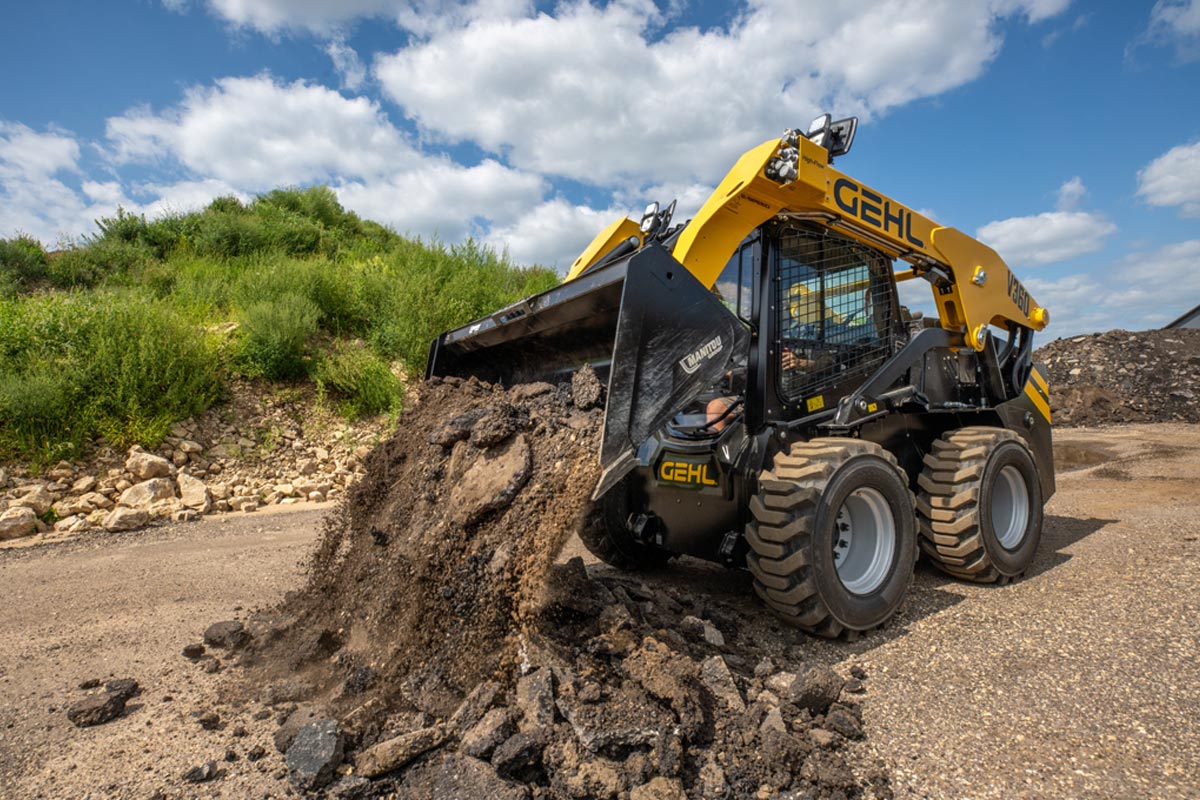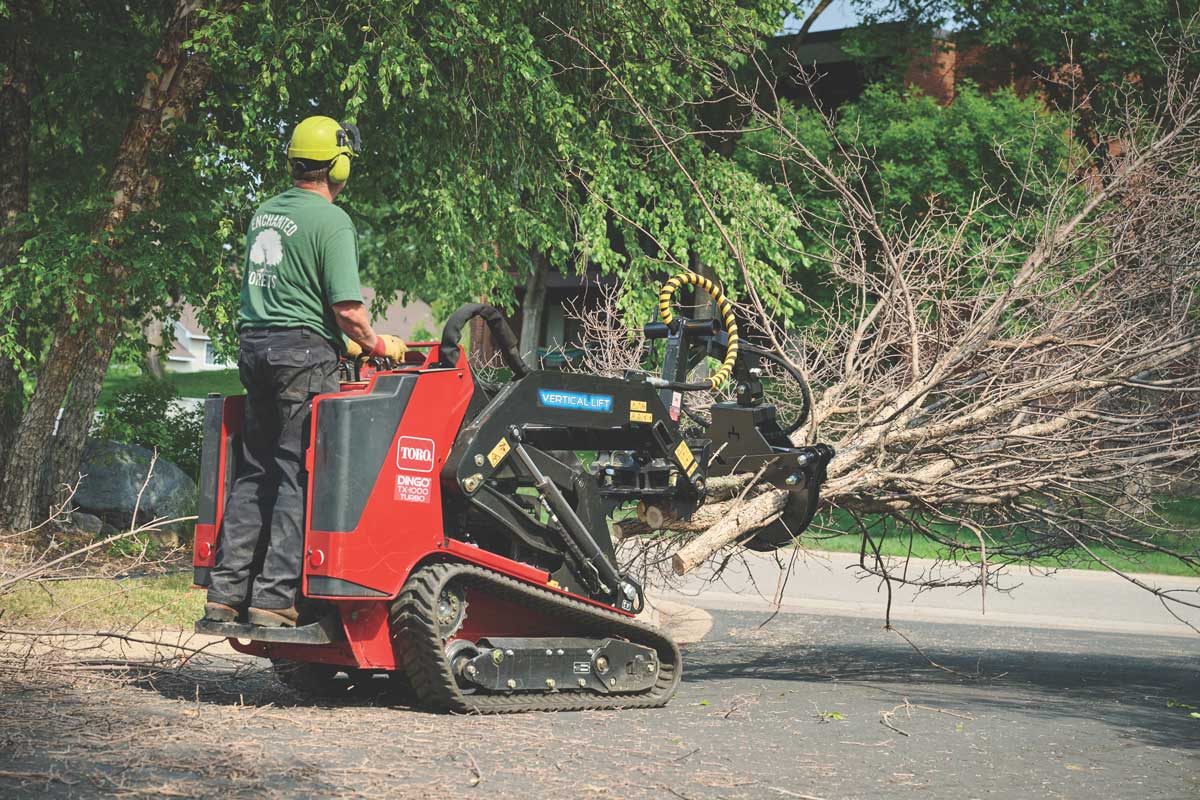How to keep a compact tool carrier humming all summer long
 A typical day in the life of a contractor is full of challenges, tight schedules and problem solving. One common challenge that contractors face on a daily basis involves their equipment. This regular challenge is also one that happens to be avoidable. By carrying out a few standard preventative maintenance efforts, crews can make sure their equipment fires up every time and is consistently working as hard as they are. One common piece of equipment found on many job sites is the compact tool carrier or CTC. These machines are extremely versatile, and contractors frequently count on them to perform in the toughest of conditions. By selecting the proper equipment, and performing some basic preventative maintenance measures, a CTC will live a long and productive life and will positively impacting contractors’ bottom lines.
A typical day in the life of a contractor is full of challenges, tight schedules and problem solving. One common challenge that contractors face on a daily basis involves their equipment. This regular challenge is also one that happens to be avoidable. By carrying out a few standard preventative maintenance efforts, crews can make sure their equipment fires up every time and is consistently working as hard as they are. One common piece of equipment found on many job sites is the compact tool carrier or CTC. These machines are extremely versatile, and contractors frequently count on them to perform in the toughest of conditions. By selecting the proper equipment, and performing some basic preventative maintenance measures, a CTC will live a long and productive life and will positively impacting contractors’ bottom lines.
Daily Care
The old saying, “An ounce of prevention is worth a pound of cure,” certainly applies to maintaining a CTC. With this in mind, before firing up the CTC, a contractor can follow this simple checklist to ensure the equipment performs at its best.
Get a good look: A contractor will want to inspect the entire machine for damage or wear. This includes a visual inspection of the tracks or wheels, fittings, body, controls and any attachments. Also, check the tire pressure or track tension. Inspect battery terminals for corrosion and loose or chafing wires. When cleaning battery terminals, remove the negative terminal first and install it last. Inspect and replace any belts that are cracked.
Check fluid levels: Make sure that engine oil, gasoline (or diesel), hydraulic fluid and battery water are all at the correct levels. Top off the fluids, if necessary, but be careful not to overfill.
Monitor filters: The air filter is made up of the canister, indicator, pre-filter and main filter. Make sure to clean the canister prior to opening it to inspect or service the pre-filter or the main air filter. Some air filter systems are fitted with a service indicator mounted on the outside of the canister. The service indicator will tell the condition of the air filter. If the filter is restricted, the inside indicator will block the clear viewing window. The air filter will need to be inspected and changed on a regular basis. Additionally, EPA standards have changed over the past few years, and many engine systems now have a component called a carbon canister, which collects fumes from the fuel systems. The carbon canister has a service life and needs to be replaced every 200 hours or sooner if the canister become s restricted with dust or dirt or saturated with fuel.

To keep the CTC running without issue, make sure that the engine oil is changed after every 100 hours of use.
Grease and tighten: Grease all pivot points and tighten all nuts and bolts before heading out into the field. There are a lot of possible issues that can arise from loose parts, and doing a simple check with a wrench before using the CTC will reduce wear and extend the life of the machine’s components.
When the work is done for the day, the operator will want to make sure to remove all debris and clean the equipment with a pressure washer. Mud and dirt that is not washed off at the end of the day can harden and damage moving parts when the machine is restarted. Washing the equipment also gives the operator a great opportunity to perform a visual inspection of the compact tool carrier. Don’t forget to grease the zerks and pivot points after every wash to ensure that the equipment will have a long, productive life.
Time-Specific Maintenance
Every 25 hours: To maximize the performance of the machine, a contractor will want to clean the foam pre-filter and air filter every 25 hours. These are vital components of the machine, and they must be maintained for the equipment to be at its best. The contractor may want to take this opportunity to get a good look at the hydraulic lines and make sure that they aren’t leaking. CTCs are used in the roughest of conditions where it is quite common to tear lines. Small hydraulic leaks can quickly grow into larger and more expensive leaks, so it is in the contractor’s best interest to catch these issues early.
Every 100 hours: To keep the CTC running without issue, make sure that the engine oil is changed after every 100 hours of use. Just like with a car, permanent damage could be done to the engine if the lifeblood of the equipment is not properly maintained. At this point, the operator will also want to take a look at the battery electrolyte levels and check the battery cable connections. Make sure any corrosive buildup is cleaned off, as this can sap the power from the battery itself. It is also a good idea to check the fan belts. Any belt that is showing signs of glazing or cracking should be replaced immediately. The contractor or technician may also think about replacing the air filter at this point. A deformed or torn air filter will allow dirt to pass into the engine and can potentially cause substantial damage.
Every 200 hours: After every 200 hours on the job, the equipment will need to have its filters changed. The oil filter, hydraulic filter and fuel filter will all need to be changed at this point. It is also important to take a quick look at the spark plugs and make sure they are not worn or fouled. Examine the condition of the porcelain, and get rid of any spark plugs that are cracked or in a questionable condition.
Every 400 hours: It’s likely that after 400 hours of use, the CTC will need a little bit of TLC. The 400-hour inspection should start off with checking the engine speed. It should be around 1,200 rpm idle, and 3,600 rpm full throttle. Also take a good look at the fuel lines and make sure that there are no leaks. The hydraulic fluid will also need to be replaced at this time. If the hydraulic oil is a milky color, that’s an indicator that there is water in the system. This may not seem like a huge issue, but as the machine heats up, water in the system will turn into steam that can cause serious damage to the pump and wheel motors. Normally after about 400 hours of use, it’s also about time to replace the fan belts.





Comments are closed here.